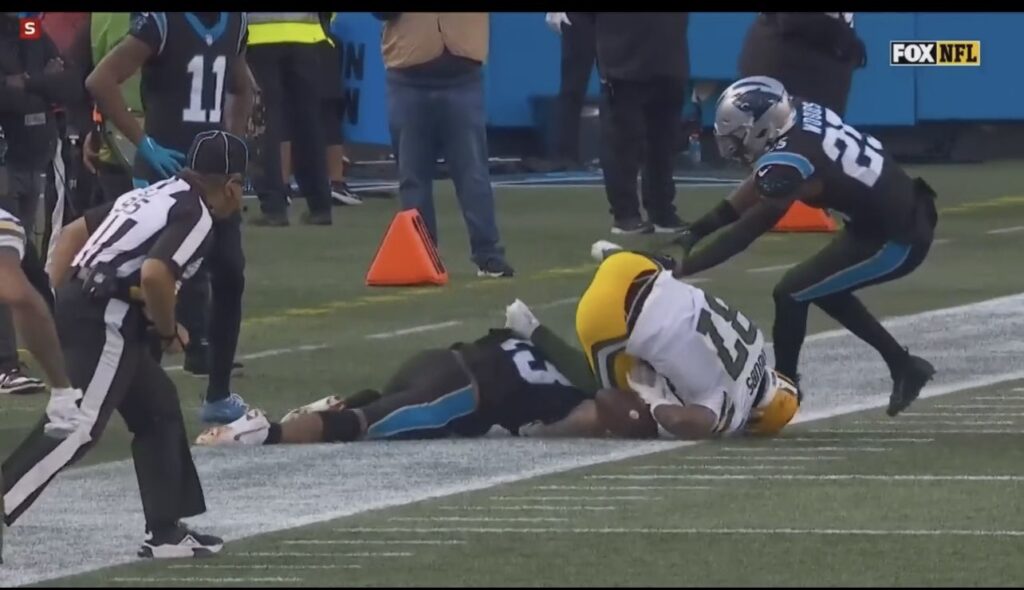With the game tied at 30 a piece and the Packers facing a 3rd and 4 from the own 34, Jordan Love threw a pass to Romeo Doubs. The ruling on the field was that it was a catch at the Panthers 33.
A still photo showed the ball touched the ground at the end of the completion.
After the game pool reporter Joe Person spoke with NFL Senior Vice President of Officiating Walt Anderson who explained the ruling.
Question: Two plays, the first one being the Carolina challenge on the Green Bay catch by 87 along the Carolina sideline. Looking at that just on the FOX replays, the ball ended up on the ground, on the turf next to 87. For what it’s worth, Dean Blandino said it should have been overturned. What did you guys see on the replay review?
Anderson: “The ruling on the field, obviously, is where we start. It was a catch and the receiver maintained control throughout the process as he was going to the ground. We actually did see the ball touch the ground, but we also saw that he had control of the ball in his left hand. The left hand never came off the ball and there were no available shots that show that he actually lost control of the ball in his left hand even though the ball touched the ground. The ball is allowed to touch the ground as long as there’s not evidence that he lost control and we didn’t think it was clear and obvious that he did. And since the ruling on the field was a catch, we stayed with the ruling on the field.”
Question: And, did you see at the end of the play that the ball being out of his control on the ground, and if so, how did you kind of come to grips with that?
Anderson: “You mean eventually, right after the process?
Question: No, I mean kind of as he was completing the catch, the ball was out of his control next to him.”
Anderson: “We did not see a view that showed that he lost control of the ball in his left hand until he was actually maybe beginning to get up. At that point, the process was over.”
Anderson also explained the nruling that time expired before Bryce Young spiked the ball at the end of the game.
Question: Okay, thank you. And then secondly, on the final play of the game, Walt, there’s the completed catch, Carolina coming down to try to spike the ball and stop the clock. Why did that play not go up to you guys in New York for review?
Anderson: “There are two parts of the replay rule that are in effect at the end of the game in this situation. Replay can stop the game and restore time only if there are two or more seconds to be added to the game. But, as part of the same rule, we can assist the on field officials. What the officials were doing was they were getting together. What they ruled was that the ball was snapped with one on the clock, but by the time the ball hit the ground, they had zero. And they asked us if we could confirm that and we did confirm that to them, that in fact the clock actually went to zero just as it was leaving the quarterback’s hand, so it was clearly at zero when it hit the ground. And we could confirm that to the crew.”
Question: So, you guys did look at that because that was not communicated on the field here at the stadium?
Anderson: “Yes, because that’s in the replay assistance rule. And so, as the officials were having their conference, they were communicating with us telling us, ‘Here’s what we’re ruling on the field. We’re ruling that the ball was snapped with one but it went to zero before it hit the ground.’ And we could confirm that indeed that was what had occurred.”
